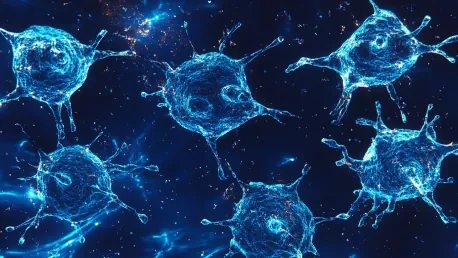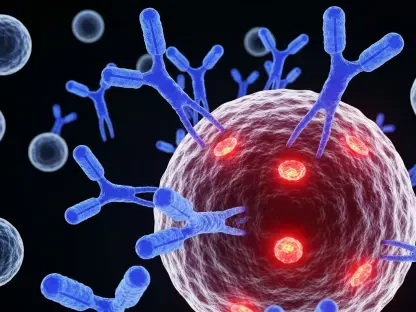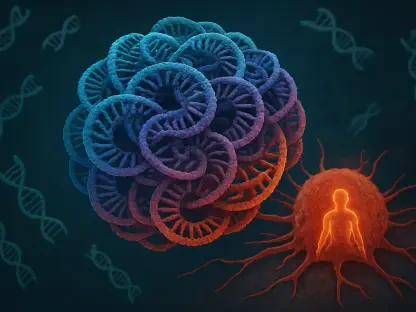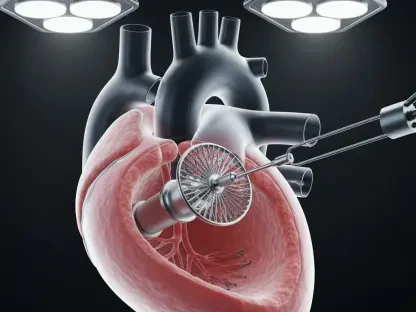Researchers at the University of Kentucky have pioneered a groundbreaking microscopy technique that may offer an affordable and effective way to study cancer cell metabolism. This innovative method, which focuses on observing metabolic reprogramming within cancer cells, has the potential to revolutionize the understanding of how tumors adapt and resist treatments. Traditional methods for studying these metabolic changes are often prohibitively expensive, complex, and can damage the cells being analyzed. However, this new approach uses a standard fluorescence microscope in combination with imaging software, providing a simpler and more cost-effective solution.
Breakthrough Study in Cancer Metabolism
Revolutionizing the Study of Head and Neck Squamous Cell Carcinoma (HNSCC)
The recent study, published in Biophotonics Discovery, showcases the applicability of this novel microscopy technique to head and neck squamous cell carcinoma (HNSCC). This type of cancer is well-known for its resistance to radiation therapy, making it particularly challenging to treat. In their research, the University of Kentucky team delved into how different HNSCC cell lines react to radiation, aiming to uncover the underlying metabolic mechanisms that drive treatment resistance.
Their findings were significant. The researchers identified that radiation treatment induces notable metabolic alterations in HNSCC cells through the activation of a protein called HIF-1α. HIF-1α plays a critical role in helping cells survive in low oxygen conditions, which are frequently encountered within tumors. This metabolic shift enables cancer cells to better withstand the effects of radiation, contributing to radioresistance. By studying these changes, the researchers have gained valuable insights into the metabolic reprogramming that occurs in response to cancer therapies, paving the way for new treatment strategies.
Investigating Radioresistance Mechanisms
To further understand the metabolic changes associated with radioresistance, the researchers utilized commercially available metabolic probes. These probes allowed them to conduct single-cell analyses of metabolic alterations, providing a detailed view of how individual cells respond to radiation. In particular, they examined two HNSCC cell lines and discovered that one of them, rSCC-61, exhibited heightened HIF-1α expression. This indicated a stronger metabolic shift towards radioresistance.
Intriguingly, the team found that by inhibiting HIF-1α, they could reverse some of these metabolic changes, making the previously radioresistant cells more susceptible to radiation. This finding suggests that targeting HIF-1α could be a viable strategy for enhancing the effectiveness of radiation therapy in HNSCC patients. The ability to manipulate metabolic pathways in this manner marks a significant advancement in cancer treatment research, underscoring the potential of the new microscopy technique to drive innovative therapeutic approaches.
Advancements and Implications of the New Technique
Overcoming Economic and Technical Barriers
The new microscopy technique developed by the University of Kentucky researchers offers a cost-effective tool for single-cell analyses of metabolic changes in response to treatments. This advancement promises to revolutionize cancer metabolism research by making it more accessible to a broader range of scientists. One of the primary motivations behind the development of this technique was to address the practical challenges associated with accessing expensive metabolic tools.
Lead researcher Caigang Zhu emphasized the importance of developing a technique that could be widely adopted, stating that the optical approach’s flexibility and functionality were key factors in their success. By reducing both the economic and technical barriers, this new method allows researchers to conduct detailed metabolic studies without requiring extensive financial resources or specialized equipment. This democratization of advanced research techniques has the potential to accelerate discoveries in the field of cancer metabolism and treatment resistance.
Facilitating New Discoveries in Cancer Research
In summary, the innovative microscopy technique offers a streamlined and affordable way to study cancer cell metabolism at the single-cell level. It holds promise for facilitating new discoveries in how tumors resist treatments, ultimately contributing to the development of more effective cancer therapies. By providing researchers with the tools they need to conduct detailed and minimally destructive analyses of metabolic changes, this new method opens up new avenues for cancer research.
The implications of this breakthrough extend beyond head and neck squamous cell carcinoma. The technique’s applicability to other types of cancer and its potential to uncover metabolic mechanisms driving treatment resistance underscore its significance. As researchers continue to refine and expand upon this approach, it is poised to become an invaluable asset in the ongoing fight against cancer, offering hope for more effective and personalized treatment strategies in the future.
Conclusion and Future Directions
Impact on Cancer Treatment and Research Accessibility
The development of this new microscopy technique marks a significant milestone in the field of cancer metabolism research. By offering a cost-effective and user-friendly alternative to traditional methods, it has the potential to democratize access to advanced research tools, allowing more scientists to investigate the metabolic underpinnings of cancer. The technique’s ability to provide detailed single-cell analyses of metabolic changes opens up new possibilities for understanding how tumors adapt and resist treatments, ultimately leading to the development of more effective therapies.
Moving Towards Personalized Treatment Strategies
Researchers at the University of Kentucky have developed a groundbreaking microscopy technique that may provide an accessible and effective way to study cancer cell metabolism. This new method, which concentrates on observing metabolic reprogramming within cancer cells, has the potential to transform the understanding of how tumors adapt and develop resistance to treatments. Traditional methods for examining these metabolic changes are often prohibitively expensive, highly complex, and can damage the cells being studied. However, this new approach employs a standard fluorescence microscope combined with specialized imaging software, offering a more straightforward and cost-effective alternative. By using this innovative technique, researchers can gain deeper insights into cancer cell behavior without the need for elaborate and costly equipment. This advancement could lead to significant progress in the fight against cancer by enabling more precise and efficient studies on how cancer cells function and respond to therapies, ultimately paving the way for the development of more effective treatments against this disease.









